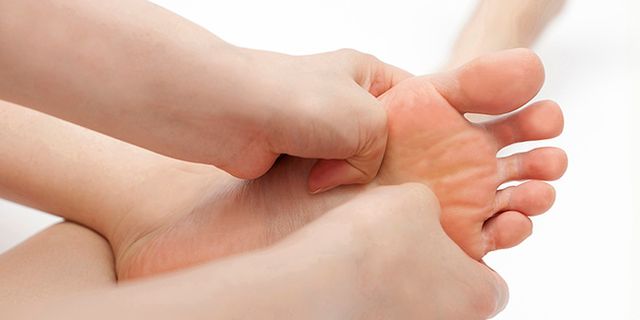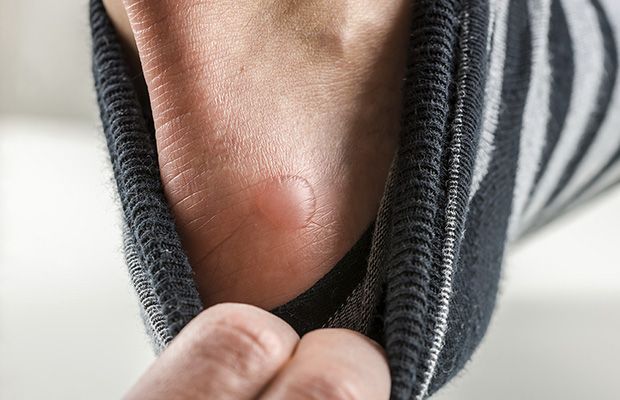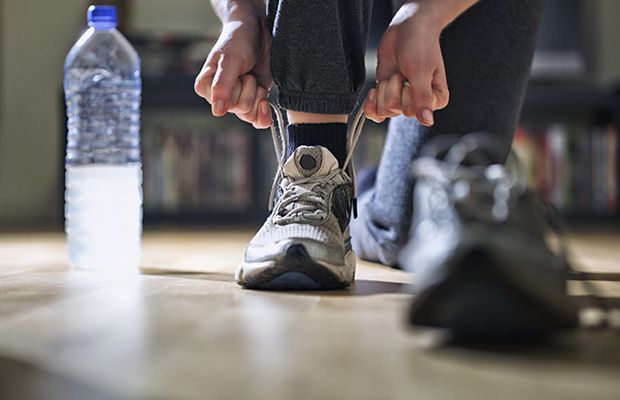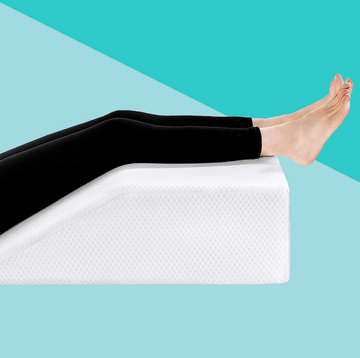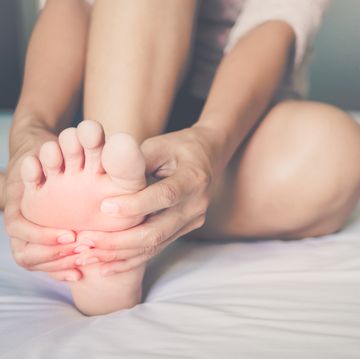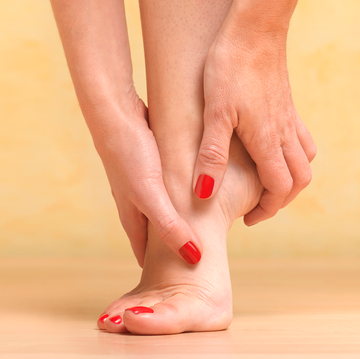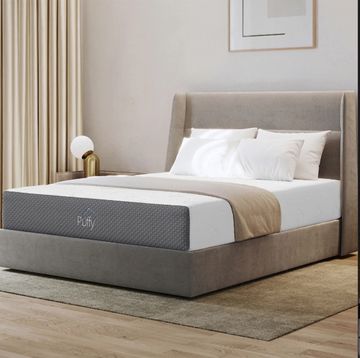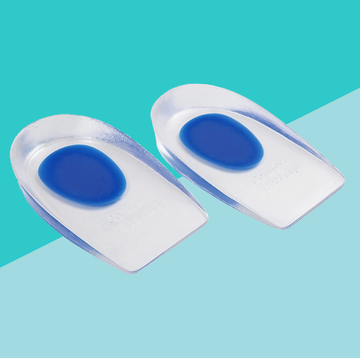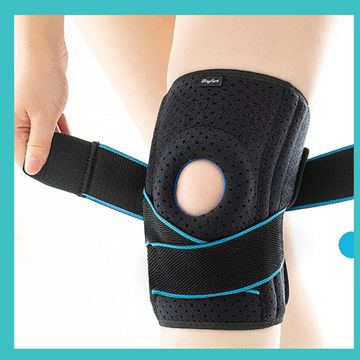Stepping barefoot on scorching-hot sand or gravel is a great reminder of how valuable your shoes can be. But if you don't have a good fit, they can be worse than sunbaked asphalt for your tootsies: "Ill-fitting shoes put the feet in unhealthy positions, which can lead to an injury," says Christina Long, DO, a podiatrist at Wake Forest Baptist Medical Center in Winston-Salem, NC. (Burn calories and build muscle—all while boosting your mood—with our 21-Day Walk a Little, Lose a Lot Challenge!)
Unfortunately, most people aren't, ahem, well heeled. One survey reveals that nearly 90% of women wear shoes that are too tight. How can you tell if you have the wrong pair? Take notice of the following five red flags. (Here are 4 moves you can do to prevent foot pain.)
1. You've been wearing the same size shoe since high school.
Over time, your arch gradually falls, causing your feet to spread. You may go up a size or more as you age, says Katherine Dux, DPM, a podiatrist and an assistant professor at Loyola University Chicago Stritch School of Medicine. At least once a year, get your feet measured at your local shoe store.
2. Your toes graze the tip of your shoes.
There should be a little room between your toe and the start of the shoe, says Long. "You should be able to wiggle your toes." That's because your feet swell throughout the day, so what fits in the morning may become too snug in the evening. "Try going shoe shopping at the end of the day when your feet are at their largest," says Dux.
MORE: Your 10 Biggest Walking Pains, Solved
3. You have blisters, calluses, or bruised toenails.
These injuries mean that your shoe is rubbing you the wrong way. "It may be too tight or narrow in certain areas," says Long. That pressure can harden your skin or affect your joints, which may lead to painful corns, bunions, and ingrown toenails. Consider getting those shoes stretched, or swapping them for a roomier pair. (Here are 5 reasons your feet hurt and solutions to stop the pain.)
4. Your arches ache at the end of the day.
If your shoes are too big, or if they're not supportive enough (think: those flimsy flip-flops), the muscles on the bottom of your foot tighten with each step in an attempt to keep your arch up. (Try this 30-second foot stretch.) This instinctive flexing keeps the shoe from sliding off or slipping around, explains Emily Beyer, DPT, a physical therapist and running specialist at the Mayo Clinic in Rochester, MN. It can also set the stage for an overuse injury, such as plantar fasciitis, where the plantar fascia tendon that runs along the bottom of your foot from toes to heel becomes chronically inflamed. (Prevent plantar fasciitis with these 3 moves to prevent heel pain.)
5. Your sneakers are too old.
Pounding the pavement (or trails) wears down your shoes, so they may no longer provide enough support. If you log about 10 miles a week, you should swap out your shoes every 9 to 12 months, says Dux. If you double that mileage with your weekly walks, figure 4 to 6 months. Other signs that you need an upgrade: Your shoes are noticeably creased, or they list to one side or the other when you place them on a flat surface.
